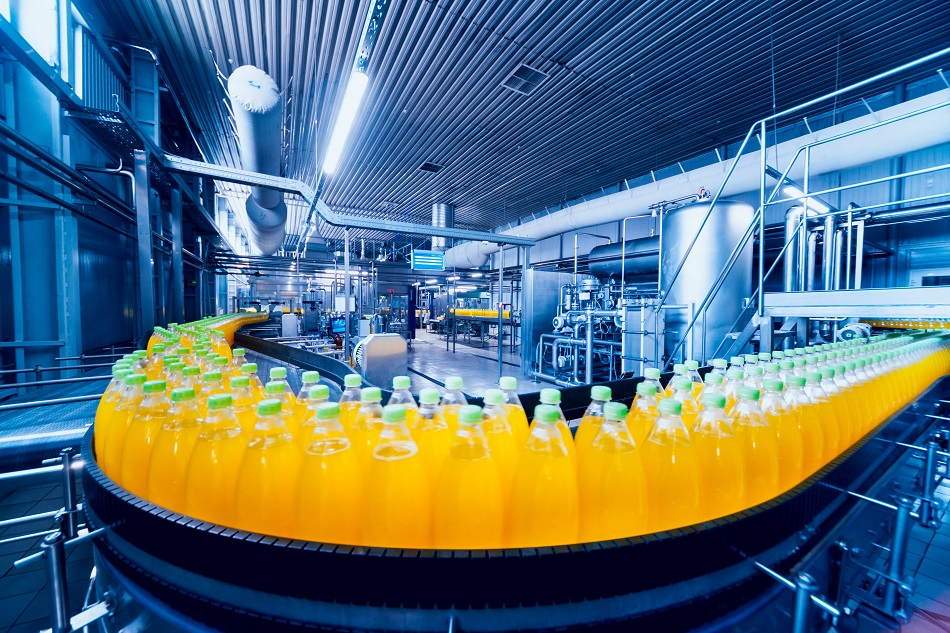By Kalwinder KaurApr 19 2013

Image Credit: Roman Zaiets/Shutterstock.com
A range of sensors has been developed to monitor industrial processes and to assess the quality of foods and beverages. Freshness is one of the most important quality parameters of foodstuff, that can be assessed by measuring the concentration of spoilage indicators. Microbial contamination is the number one enemy in the food supply chain. These pathogens can be controlled using chemical sensors that can detect specific DNA or antibody-antigen recognition. Chemical sensors can be used to determine the concentration of glycerol and ethanol, both products of alcoholic fermentation. Enzymatic sensors can also be produced for determining the concentration of these products as well as the content of sulfite ion in wine.
Other measurable quality parameters are the content of vitamins and nutrients. Saccharides such as sucrose, glucose, and lactose can be determined using enzymatic sensors depending on the specific enzymes that chemically convert the target compound.
Research
Halogenated substances used for disinfection applications in the beverage and food industries have now been replaced for environmental reasons by peroxides. Factors such as cost and the need to eliminate these agents require simple, inexpensive and sensitive test methods that have an on-line capability and a wide dynamic range. Moody A et al developed such a method in Cranfield University in 2001. They made inexpensive peroxide sensors using a single deposition procedure, which involves capturing dimethylferrocene (DMFc) mediator and horseradish peroxidase (HRP) enzyme within a cellulose acetate membrane on the working electrode area of a screen-printed three-electrode assembly. Optimum performance was achieved when 25 U of HRP and 0.3 µM of DMFc were loaded to each electrode, and the mean molecular weight of cellulose acetate was found to be 37,000. The sensor was shown to have stability ≥ 4 d and an accuracy of ± 16% in continuous flow-mode. Also, the sensor was used successfully on-line within a flow-cell for measuring peroxide levels during the disinfection of an industrial fermentation vessel.
Quality control of a wide range of beverages, pharmaceutical and food products needs objective taste evaluation. In 2010, Kobayashi Y et al from the Kyushu University developed advanced taste sensors using artificial-lipid membranes based on human sensory scores and global selectivity. These sensors were found to respond similarly to basic tastes, and so they are quantified with high correlations to sensory score. These sensors can quantify the tastes of bitterness, richness, astringency, sourness, saltiness and umami without artificial neural networks or multivariate analysis.
In 2012, Kladsomboon S et al from Mahidol University, Bangkok, proposed a method for detecting alcohol vapors including isopropanol, ethanol and methanol based on optical sensing response magnesium 5,10,15,20-tetraphenyl porphyrin (MgTPP) thin films using optical spectrometry. The team used a technique that enables a laboratory UV-vis spectrometer to serve as an electronic nose with less modification. MgTPP thin films were developed through a spin coating method with the help of chloroform as solvent. The thin films were then subjected to thermal annealing at 280°C in an argon atmosphere. Experimental results determined that the MgTPP optical gas sensors show significant responses with methanol when compared to isopropanol and ethanol. They also performed density functional theory calculations to model the mechanism of this selectivity. Optimization of the performance of the optical gas sensors can be carried out by altering the fabrication parameters. Hence, the researchers hope that the MgTPP thin film can be a useful tool for analyzing alcoholic content in the beverage industry.
Current Applications
Some of the applications of sensors in the beverage industry include the following:
- Level measurement in high alcohol tanks
- Overfill protection
- Monitoring the feed pressure in the pipeline of alcohol tanks
Conclusion
The transition of sensor technology from bulky, expensive and mechanical sensing devices to small, cost-effective smart sensors has offered rapid, reliable information that can interface and inform a large centralized control system or local shop floor computers. Focus on the quality and safety of beverages, foods and pharmaceuticals has intensified during recent years. Additionally, manufacturers are aiming to minimize the product cycle and offer high-quality foodstuff at lower costs, to face the challenges of increased price competition after the global recession. Not surprising then that this sector needs accurate, rapid and simple taste evaluation methods.
Some of the major sensors used in the process industries include pressure sensors, flow sensors, level sensors and temperature sensors. Chemical sensors for gases and liquids, industrial cameras, sensors for condition-based monitoring and humidity sensors are also gaining importance as they can increase plant productivity and achieve high product qualities. Taste sensors, on the other hand, can detect deteriorated taste qualities in the foodstuffs and beverages industry. Future work is focused on the further development of MEMS-based taste sensor chips and a sweetness sensor.
Sources and Further Reading
- Moody A et al, Peroxidase enzyme sensor for on-line monitoring of disinfection processes in the food industry, The Analyst, 2001, 126(10):1733-1739.
- Kladsomboon S et al, A method for the detection of alcohol vapours based on optical sensing of magnesium 5,10,15,20-tetraphenyl porphyrin thin film by an optical spectrometer and principal component analysis, Analytica Chimica Acta, 2012,757:75-82
- Kobayashi T et al, Advanced Taste Sensors Based on Artificial Lipids with Global Selectivity to Basic Taste Qualities and High Correlation to Sensory Scores, Sensors, 2010; 10(4): 3411–3443
- Intechno Consulting - Sensors for the Process Industries – Summary
- Google Books - Applications of Chemical Sensors in the Food Industry, Agriculture, and Biotechnology
This article was updated on 13th February, 2020.
Disclaimer: The views expressed here are those of the author expressed in their private capacity and do not necessarily represent the views of AZoM.com Limited T/A AZoNetwork the owner and operator of this website. This disclaimer forms part of the Terms and conditions of use of this website.